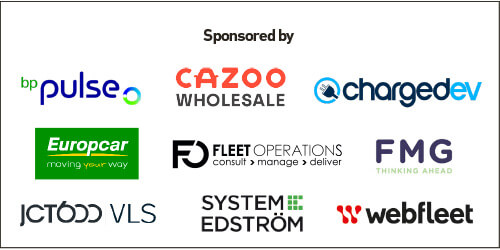This feature was taken from our comprehensive Guide to Choosing the Right Supplier. Click here to read the full special report.
In the troubling aftermath of a collision, an accident management company can resemble a white knight, communicating with drivers and third parties, notifying fleets and insurers and starting a sequence of events that reduce the stress and limit the cost of the claim.
Supplier websites suggest that every accident management company delivers a full range of services, so the challenge is to find a partner with expertise in those areas of the crash-to-claims process that really makes a difference to
individual fleet requirements.
Courtney Brennan, fleet claims manager, Speedy Services, says: “The main thing for us was having a robust claims line, so if a driver has an accident their call gets answered quickly.”
This is critical for fleets whose drivers work outside standard office hours, with some accident management companies only operating phone lines during the nine-to-five, before handing over to a third party for out-of-hours calls. A subcontractor’s knowledge of the fleet, the information it wants to capture, and its notification procedures may not be as comprehensive as those of the
accident management company.
A time limit for the first notification of loss (FNOL) formed part of Speedy’s tender for accident management. The company sets a 60-minute deadline after a driver reports a collision, the so-called golden hour, for its supplier to take control of the incident and, if the driver is at fault, provide a replacement car to the third party and book their vehicle in for repair. This can reassure the third party and avoid significant credit hire costs.
Forward-facing cameras
With an increasing number of fleet vehicles now featuring forward-facing cameras, accident management companies have the opportunity to review video and establish fault within minutes of a collision.
“The next step is to book our vehicle in for repair. So, we need to ensure that the accident management company has a wide network of repairers up and down the country, especially in the areas where we operate,” says Brennan.
For mixed fleets, it’s also important that these repairers can fix the widest range of vehicles, says Stewart Lightbody, fleet management lead, Severn Trent, gazing out of his window at a 44-tonne tractor-trailer combination.
“You might find a workshop doesn’t have enough room – the vehicle is too high or too long – so it’s vital to know your fleet’s extremes,” he says.
“Accident management is not just a service, it needs to be aligned to the complexities of your fleet and operation.”
Naturally, not all collisions are the fault of a fleet, so accident management companies also need to provide uninsured loss recovery (ULR), to recoup repair costs and replacement vehicle fees from the third party, especially costs that fall below a policy excess where an insurer would get involved.
Minimising repair times is also an important accident management function, although Brennan says a dose of realism is required for setting vehicle-off-road (VOR) targets, given the wildly different levels of damage that a vehicle might suffer, as well as the availability of replacement parts in today’s supply chain crisis.
Valuable insights
Finally, the analysis of claims data can provide valuable insights into the areas where fleets face most risk, allowing for targeted solutions.
A rash of broken wing mirrors might prompt a depot redesign, backing into stationary objects could lead to reversing cameras, and rear-end shunts could prompt a review of driver distraction policies.
“We get a data pack through every month that categorises types of
accident, so we can put processes in place to understand why they are happening, and introduce training to avoid them,” says Brennan.
The Choosing the Right Supplier special report is sponsored by: FMG, BP Pulse, Fleet Operations, JCT600 VLS, System Edstrom, ChargedEV, Cazoo, Europcar and Webfleet.




















Login to comment
Comments
No comments have been made yet.